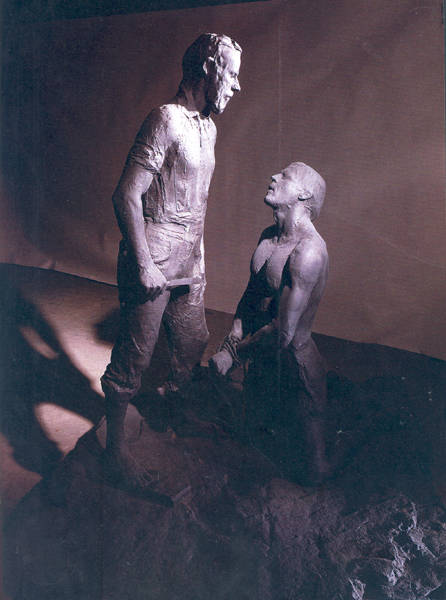Image Details

Photo courtesy of the artist/©George Segal/VAGA, NY, NY
“Do not raise your hand against the boy,” an angel cries out as Abraham prepares to slay his son Isaac in obeisance to God’s command (Genesis 22:12). In this painted plaster sculpture from 1978, Abraham stiffly points an actual knife at his son’s chest; real rope binds Isaac’s arms. In Jewish tradition the near-sacrifice is called the Akedah, or the “Binding,” of Isaac because Abraham bound his favored son before laying him on the altar as a sacrifice.
As Segal’s reputation grew in the 1970s, he received commissions for several public sculptures, including this work, In Memory of May 4, 1970: Kent State, Abraham and Isaac, a tribute to the four college students who were slain when the National Guard was brought in to stop an anti-war demonstration at Kent State University. The Ohio university balked at Segal’s choice of subject, claiming that an act of violence should not serve as a memorial to an act of violence. Segal countered, however, that the story of Abraham and Isaac, like the incident at Kent State, illustrates the eternal conflict between adherence to an abstract set of principles and love for a child. Said Segal, this “up-to-date” story is about “intimate family relationships versus intellectual matters, which is an extremely modern problem.”
The university refused to display the sculpture, which now stands near the chapel at Princeton University, in New Jersey. It is the only biblical sculpture pictured here that is on public view.
